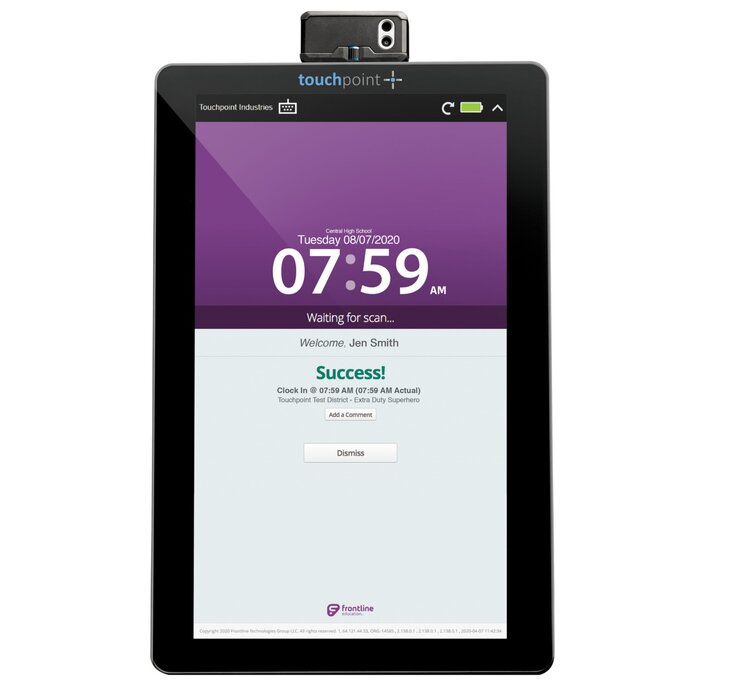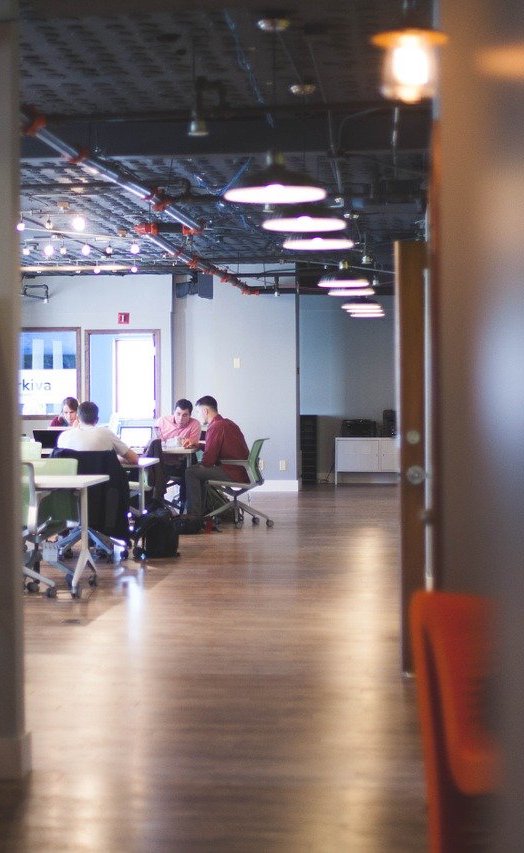Touchpoint Industries
Making schools smarter with touchless time
The Opportunity
Helping Schools Get Smarter
It’s no secret that our K-12 schools. teachers and administrators need all the support that they can get.
Connected technology can help by reducing the administrative overhead that comes with managing a classroom, a school, or a district. With the right tools, school districts are finding success in automating the redundant, manual processes that can draw attention — and funds — away from helping students succeed in the classroom.
Pennsylvania-based Touchpoint Industries was founded in 2015 specifically to support school district IT and HR personnel with the crucial task of time collection. Touchpoint’s advanced people management systems are now deployed across the United States, ensuring simple, reliable, affordable time tracking for everyone who contributes to the educational mission, from teachers and administrators to maintenance professionals and support staff.
Touchpoint’s contactless time clocks, self-operating kiosks, and plug-and-play DIY solutions make it dramatically easier for school districts to reliably and safely track time and attendance data for all employees. Touchpoint frees up time and resources from IT, human resources, and other administrative functions, helping schools to more easily and reliably track hours for every role to simplify basic payroll processing and ensure compliance with state-level guidelines and requirements.
“Our device is always working, with staff clocking in and out 24/7,” says Seth Hartman, Director of Operations and Facilities at Touchpoint. “When school staff use it, they know it’s going to work.”

Director of Operations and Facilities, Touchpoint IndustriesWith the telco, I had to constantly be in communication with our rep to shut down, purchase, or manage lines. I pull the reports I need to see usage, billing, and spreadsheets of the data, which I didn’t even know was possible until we switched.
The Solution
Time Tracking Made Simpler, Safer, and More Secure
“My job is to make sure that… we offer the best products, we build them in the best way, and we integrate partners efficiently to ensure value for the districts we serve,” says Hartman.
To support the multiple approaches that school districts may take to track time across school staff, Touchpoint offers a wide range of specialized devices. Districts can mix and match tools from across four fully-connected hardware lines to tailor the right solution for each school, classroom, and IT environment. Each product supports a clearly-defined use case and comes with Touchpoint’s ongoing support.
● DIY: Schools can use existing computers, along with a kit that includes an RFiD proximity scanner and a barcode reader for schools to use their existing badges.
● Tablet: Touchpoint’s secure, proprietary tablet with an available kiosk and limited badge scanner.
● Timeclock: These touchless timeclocks offer a plug-and-play solution that integrates with existing badge systems.
● Safe-T-Screen: These kiosks help curb potential transmission of COVID-19 by using thermal scanning to collect HIPAA compliant data from employees, volunteers, and visitors.
Hartman’s key area of responsibility is to source, evaluate, and choose components for each of these devices. He and his team make sure that customers can expect worry-free use of Touchpoint solutions for a full 7 to 10 years. That includes providing LTE connectivity as a backup in case local Wi-Fi goes down or is not available due to district IT policy. The search for improved quality and value led the team to Soracom.
WHY SORACOM
Affordable service, granular control
“Previously, we had a business relationship with one of the “big three” telcos,” says Hartman. “We paid so much for the SIM and then had to pay more with the data. It seemed like they just weren’t designed for a business like ours, where we have so many separate customers out in the field using individual data lines. The price just got too much for us to handle.”
The search for alternatives may have been kicked off due to cost concerns, but Hartman quickly found that Soracom’s purpose-built IoT connectivity provides other advantages. In particular, the Soracom User Console dramatically improves the Touchpoint team ability to monitor and control its entire network of connections and devices.
“One of the biggest things is to be able to manage everything in the backend,” Hartman explains. “With the telco, I had to constantly be in communication with our rep to shut down, purchase, or manage lines. With Soracom, I pull the reports I need to see usage, billing, and spreadsheets of the data., which I didn’t even know was possible until we switched.”
Soracom’s IMEI Lock feature also offers an added level of security for environments where devices may be subject to occasional tampering by curious students. If the SIM card is removed from its assigned device, it simply stops working. More recently, Touchpoint has begun using the Soracom Onyx LTE dongle to connect plug-and-play time tracking devices to cellular networks.
Services in use
• SORACOM Air: smart connectivity for IoT
• SORACOM Onyx: plug-and-play LTE modem

The Outcome
Trusted Partnerships with Schools
Touchpoint’s deep commitment to quality and value has earned the trust of IT teams and superintendents in districts across the United States, ensuring a virtuous circle of candid input and product improvement.
“Our ideas come directly from requests that schools share with us,” says Hartman. “There’s one IT specialist for every 1,000 staff members. It’s very hard for them to manage everything that the kids and teachers need. So we kind of think of ourselves as an outsourced IT department. They ask us if we’re working on things that may address problems or issues that they may be facing.”
This level of trust is a result of the extremely high-integrity solution that Touchpoint brings to the market. With this foundation, the product development team at Touchpoint continuously strives to iterate on the value of the product.
“We’re working on streamlining the device to be more aesthetically pleasing, developing use cases around emergency evacuations, and creating software to assess staff exposure to COVID-19. We’re also exploring how to create devices that will support students more directly.”
